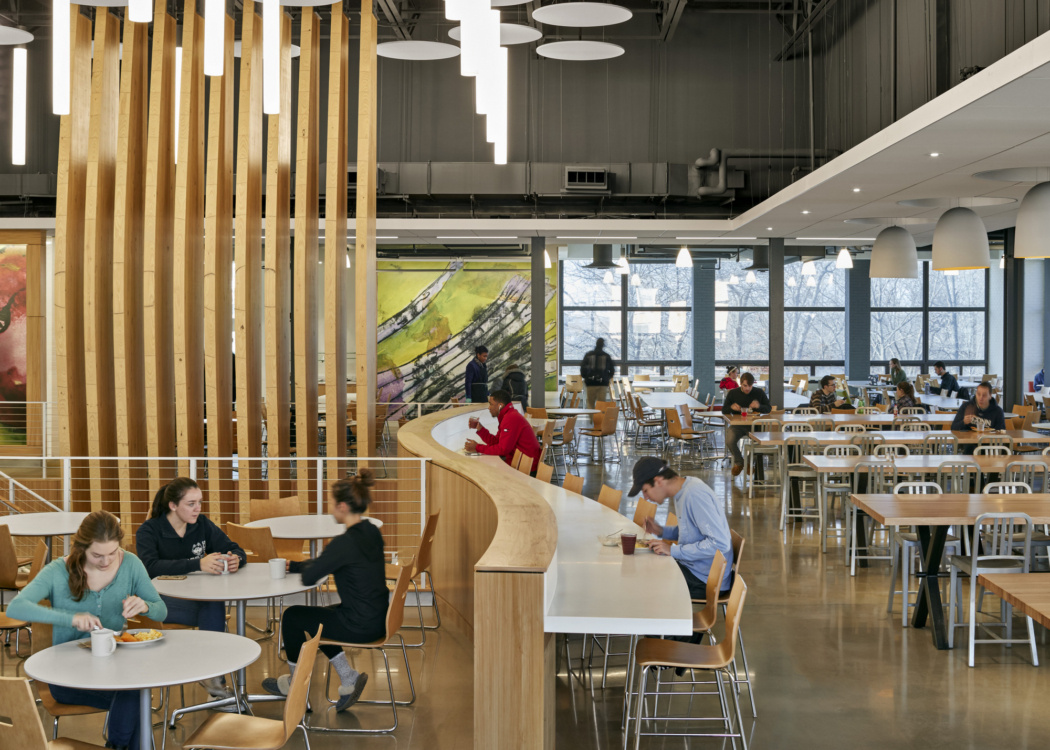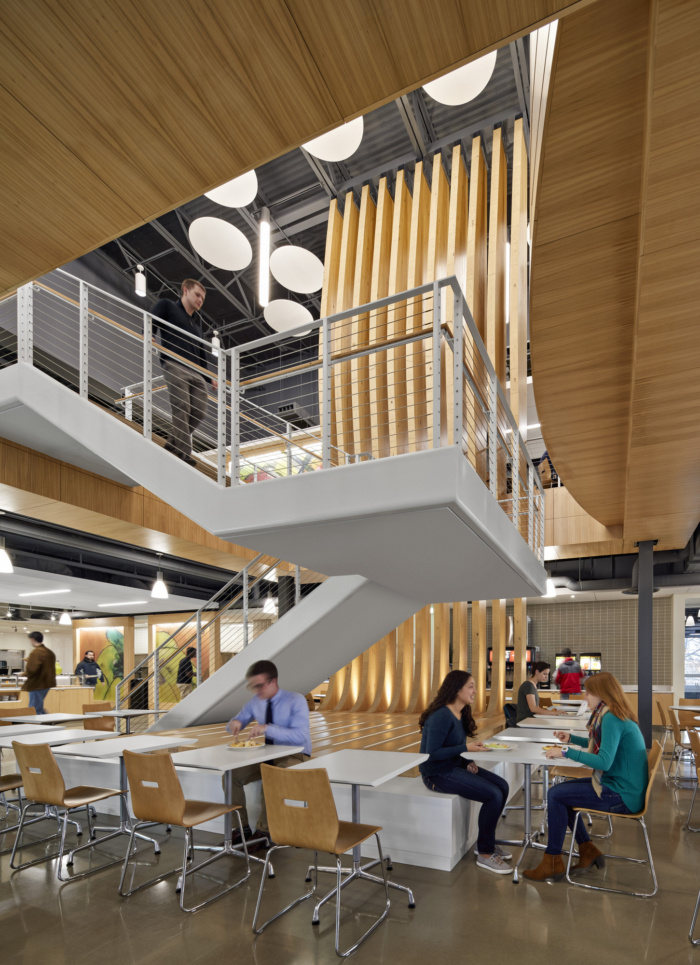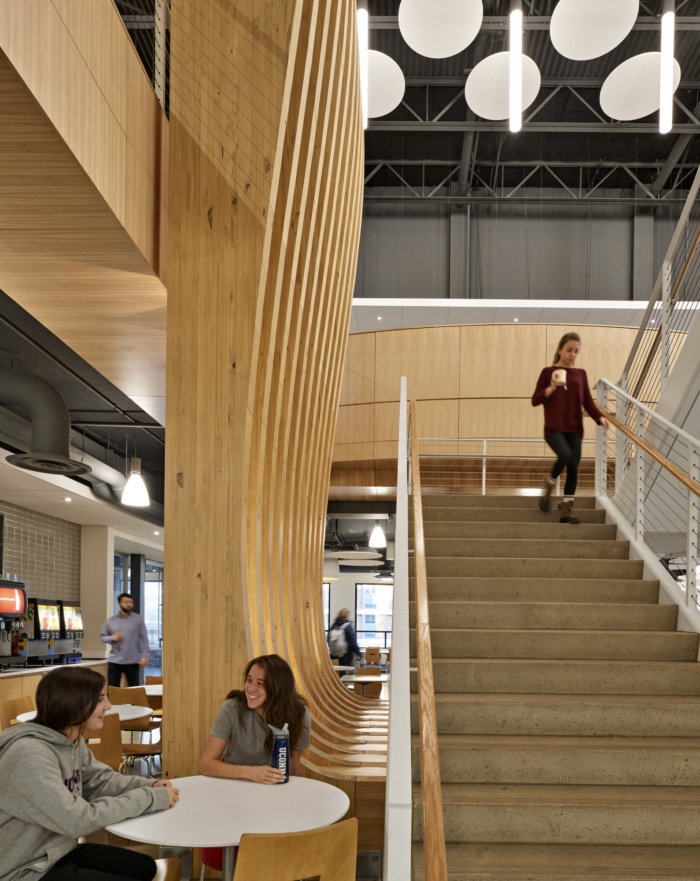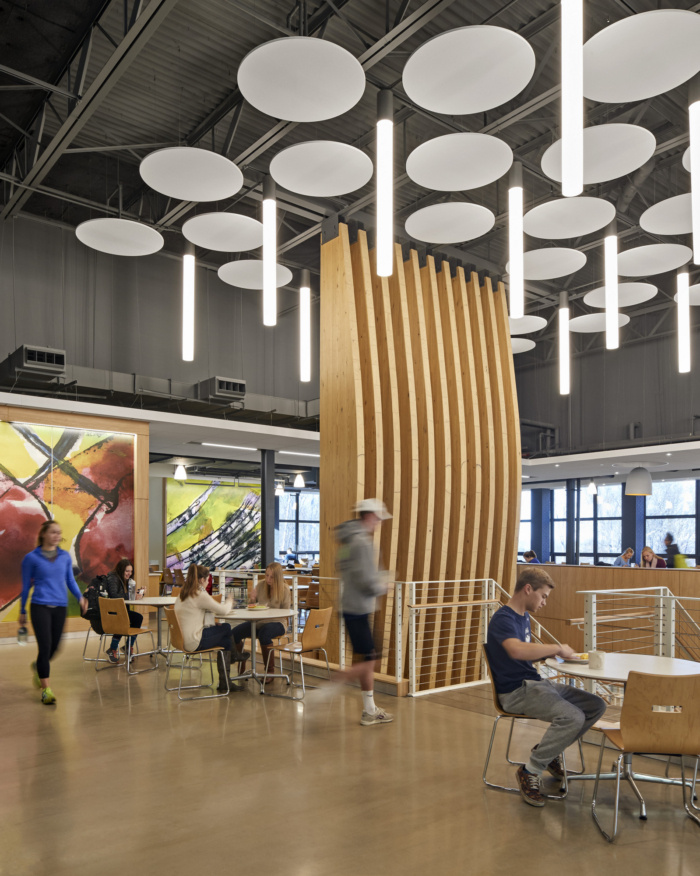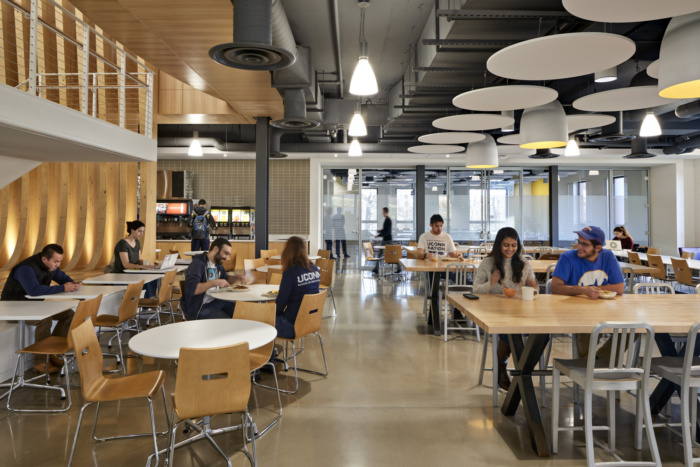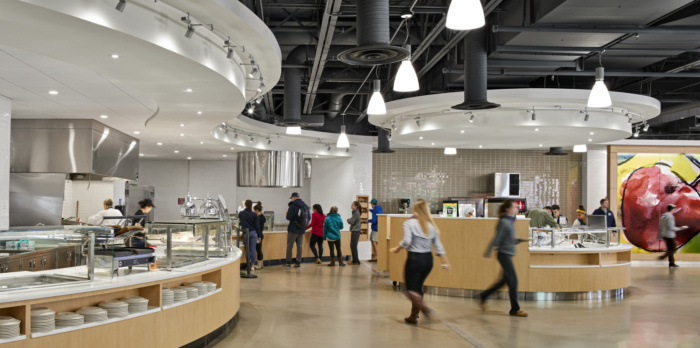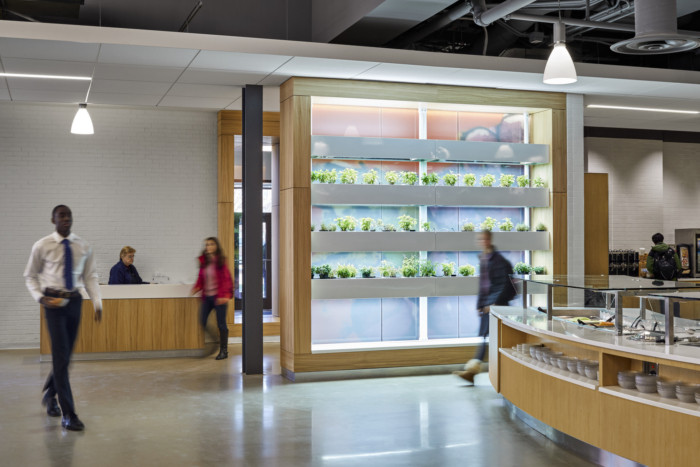University of Connecticut – Putnam Refectory
Amenta Emma Architects designed the Putnam Refectory at the University of Connecticut located in Storrs, Connecticut.
The Putnam Refectory on the Storrs Campus of the University of Connecticut was desperate for a makeover. Not only was the 1969-era facility not meeting capacity, its servery and meal prep areas were in urgent need of modernization and upgrades. The renovated made-for-millennials space not only doubles capacity, from 400 seats to 700, but it has become the most popular dining experience on campus in a very short time. The Refectory opened in August.
An important design challenge was creating a connection between upper and lower levels. The dark lower level previously held offices, mail room, and lounge, but the space was needed to accommodate increased seating capacity. Designers desired the lower space to feel open and similar to the upstairs space and for both spaces to feel equally appealing. The solution was iconic sculptural element made of laminated wood reinforcing the verticality of the space. At the lower level, the sculpture bottom forms a seating platform.
Raw finishes, such as polished concrete floors, exposed ceilings, whitewashed brick walls and butcher block farm tables, complete the transformation. Old “wagon-wheel” chandeliers were replaced with energy efficient fixtures with different light levels to create appealing zones within the facility. With wireless access, endless coffee, and a meal plan that allows unlimited dining, Putnam Refectory becomes the quintessential “third place.”
A variety of seating environments allow diners to experience the building in different ways, either in groups or as individuals. A space for small conferences or special events, such as cooking demonstrations, is on the lower level. This space also can accommodate overflow.
UCONN has been recognized as one of the country’s best college dining programs, preparing an estimated 3,250 meals a day. Giant original watercolor graphics of fresh fruits and vegetables reference the university’s farm-to-table reputation. A wall garden features fresh herbs used in food preparation, which also are available to students to add to dishes. These elements reinforce the school’s agricultural heritage and its farm-to-table philosophy. Herbs are provided by a local grower. The old serving line has been replaced with special venues, including a gluten-free option and a circular juice bar, where students choose from natural ingredients for on-demand smoothies.
All of this was not lost on the University’s president and cabinet, who called the facility a “wow,” after a recent dining experience.
Architect: Amenta Emma Architects
General Contractor: KBE Construction
Photographer: Robert Benson Photography

